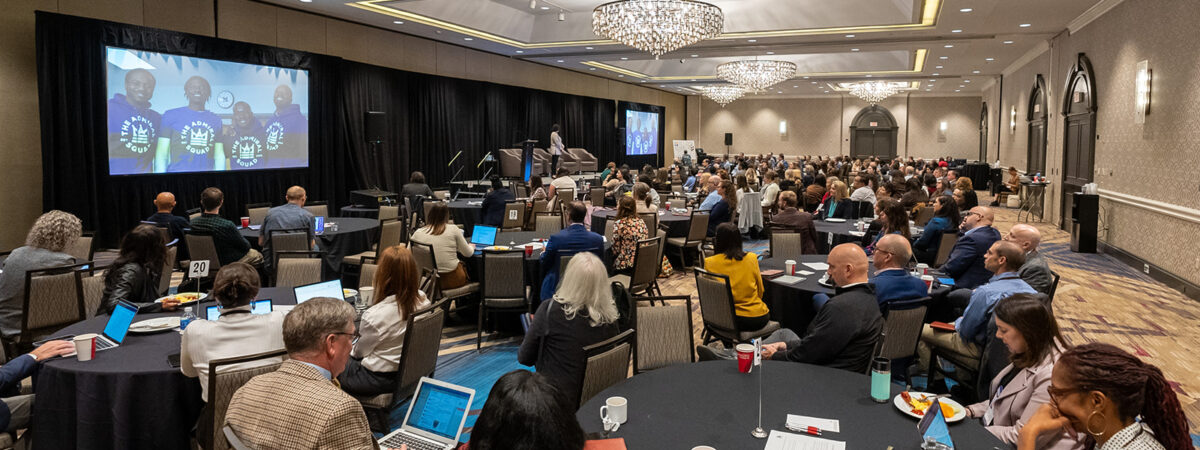
We selected five powerful quotes from countless insights that were shared at our national convening on transforming education R&D to highlight important perspectives and ideas that emerged.
“I have experience as a CODA—a child of deaf adults. I was the interpreter bridging the hearing and deaf worlds together. What I realized is that technology is that bridge. Technology is what allows all of us to connect, but even more so people with disabilities.”
- Heather Dowdy, Accessibility Catalyst and Leader, Director of Product Accessibility, Netflix

Heather Dowdy, director of product accessibility at Netflix, delivered the opening keynote at the Center for Inclusive Innovation’s October convening.
Heather Dowdy, an accessibility catalyst and leader, opened up with a powerful keynote centered on her story of being a child with parents who could not hear. Growing up as a “CODA” (child of deaf adults) and seeing the limitations created by an environment designed primarily for those who can hear led Heather to pursue engineering to shape technologies to make the world accessible to all. As a child, she had to bridge the hearing and deaf worlds—and now, she believes “technology is that bridge” that allows people with disabilities to connect.

A visual depiction of the Monday morning sessions, including Heather Dowdy’s keynote, illustrated by Matt Orley.
Heather underscored how the pandemic made it abundantly clear that the number of people navigating life with disabilities is growing; the challenge is that only 1 in 10 people have access to the technology they need. She cited examples of promising disability-centered tech, including SignUp caption plugins created by a 17-year-old, Netflix-narrated audio tracks, NWEA assessments, and I-STEM. She closed by asking, “How are ALL the children?” as a call to action to meet the needs of not just some, but all.
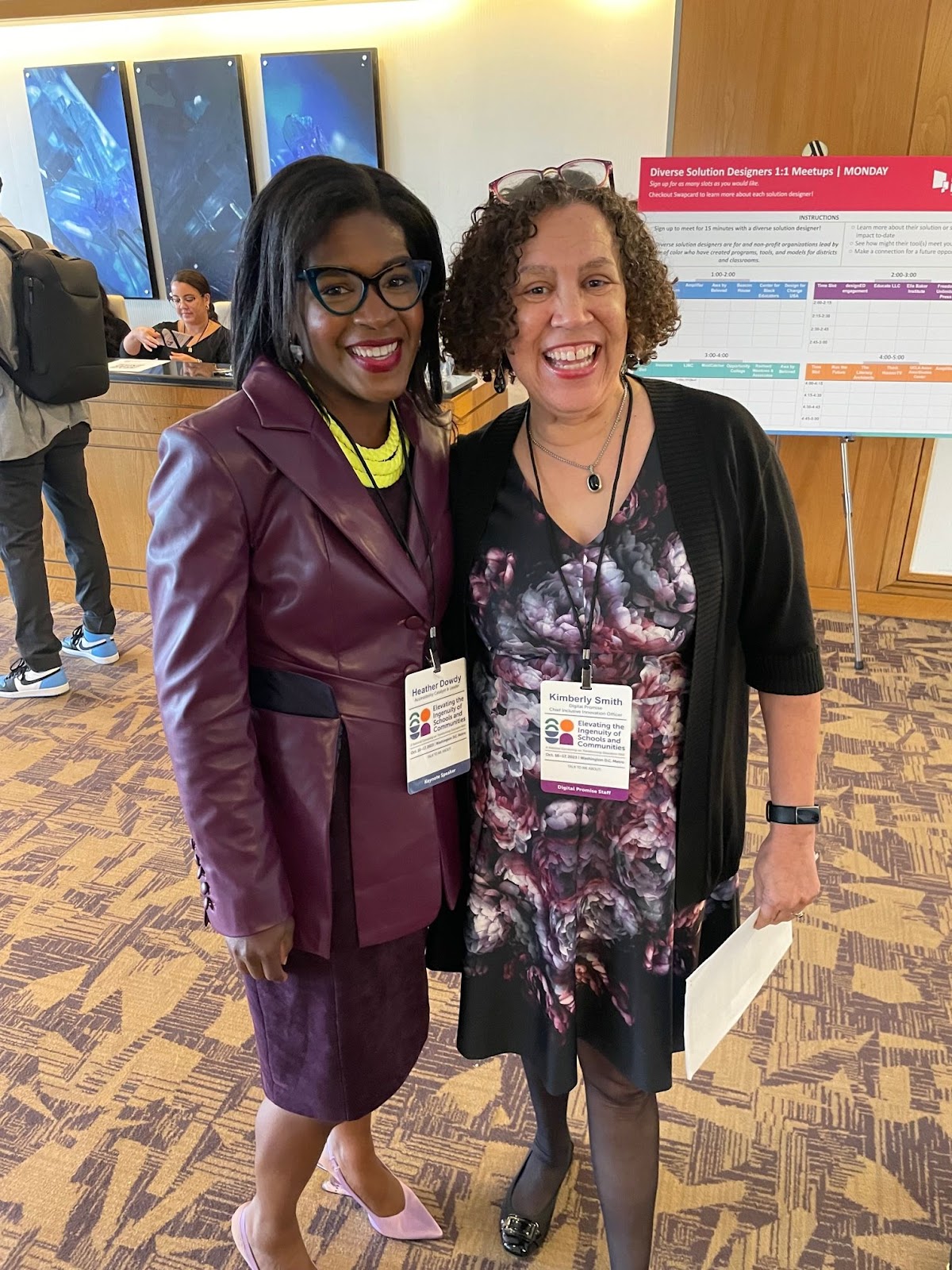
At this year’s Inclusive Innovation convening, Heather Dowdy, an accessibility catalyst and leader, stands with Kimberly Smith, chief inclusive innovation officer at Digital Promise.
“I personally know how it feels to not belong. So I want you to know that I matter [and] you matter, and with all the work we’re doing here today, everyone after us will be inspired.”
- Ray’Aunnah Tillis, College Freshman, Miami University and Middletown City School District Graduate
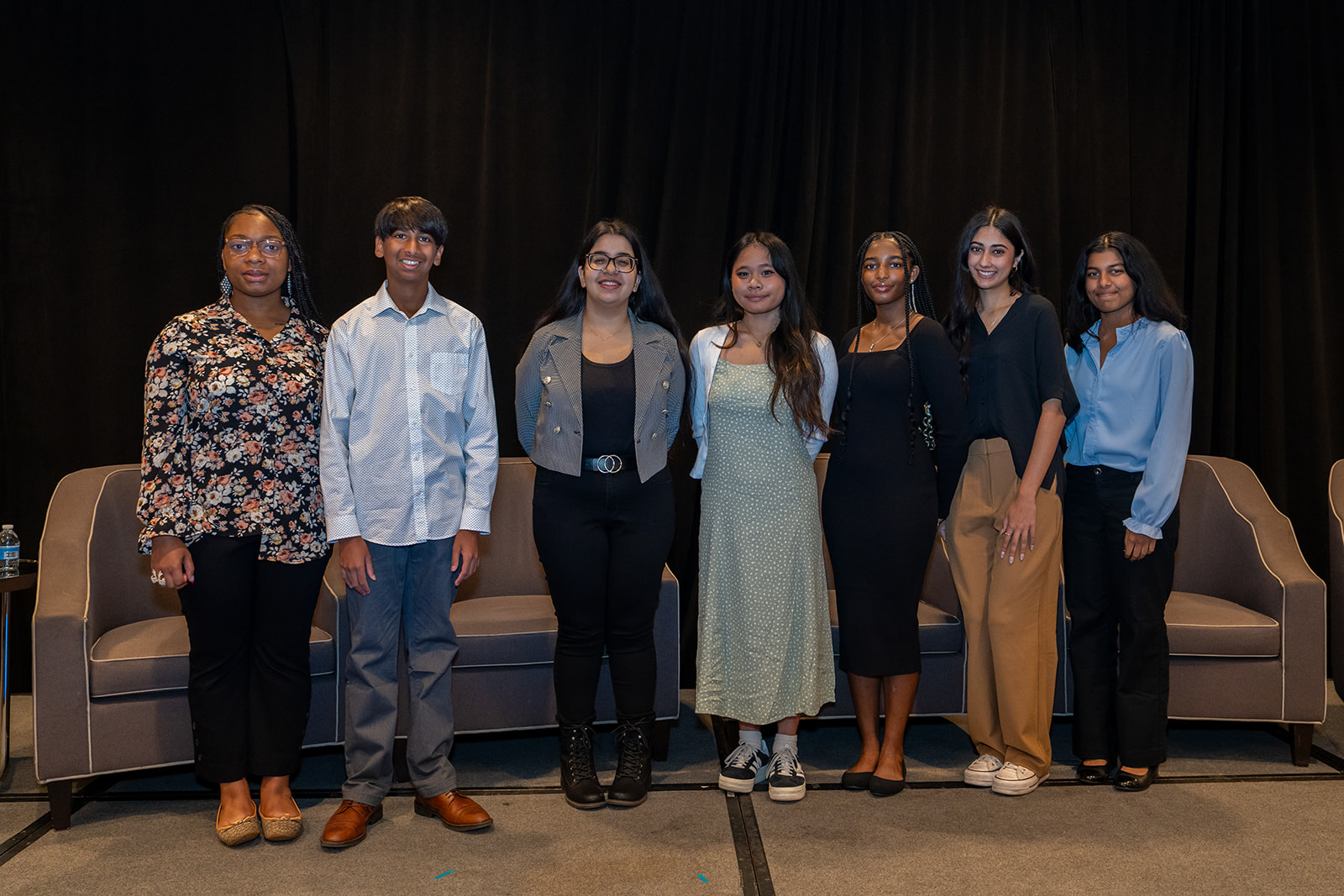
The League of Innovative Students is an opportunity for secondary school students to have a positive impact on society by collaborating with district leaders, education policymakers, educational technology developers, and researchers in designing student-centered solutions.
The value of student-led research is evident both in the ideas that emerge and in the array of durable skills they develop, including how to structure a research project, develop a research plan, create assessment tools, and conduct interviews and focus groups. The work encouraged the students to step out of their comfort zones. As noted by Madison Asperer of Rowland Unified School District, “I realized that the more information I absorbed, the more invested I became in finding the solutions. Now I find that I’m not afraid to question or be vulnerable with teachers or administration.”
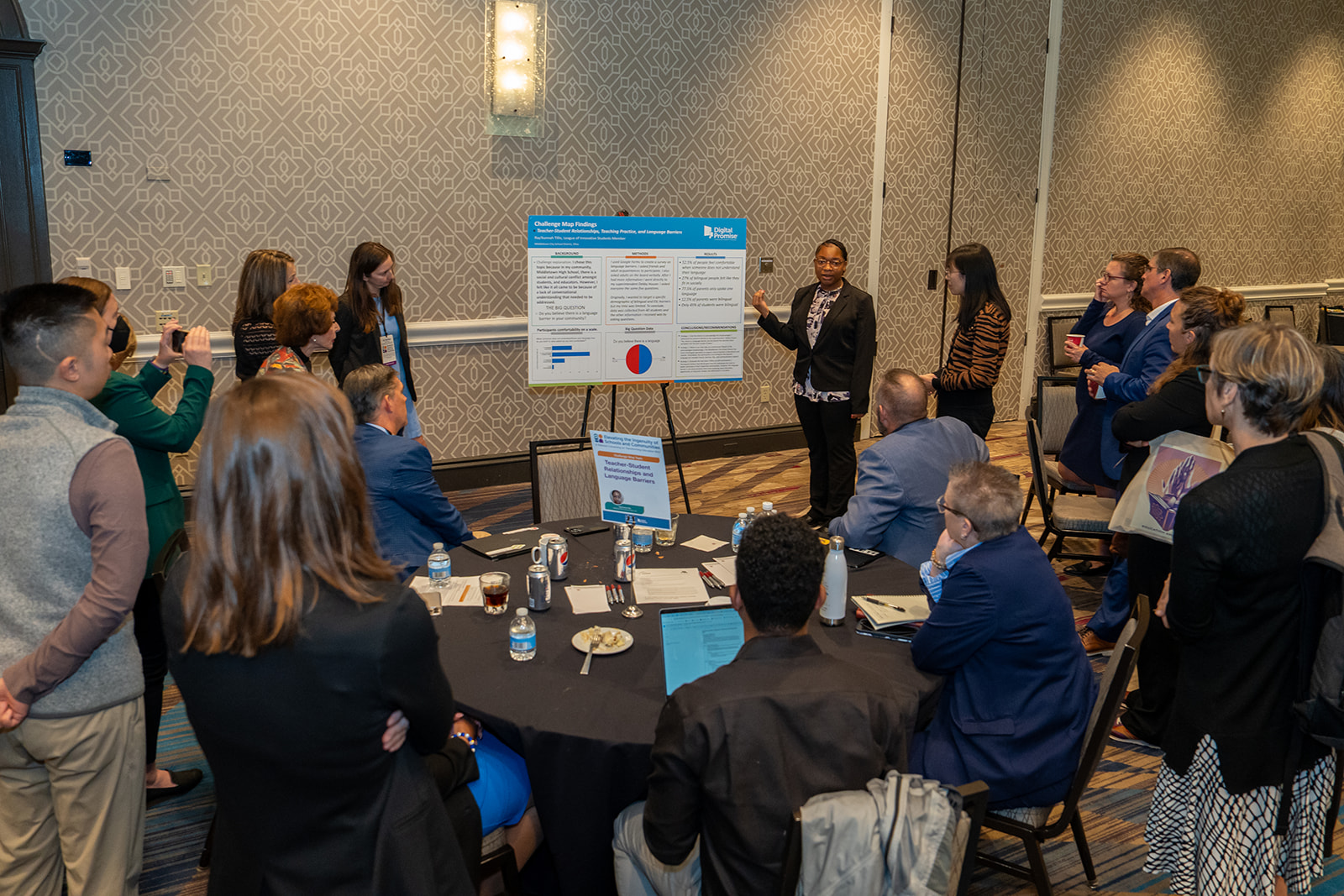
Ray’Aunnah Tillis, a freshman student at Miami University and a graduate of Middletown City School District, presents her research.
Every student underscored the value of the role of teachers in encouraging and enabling students voice and leadership. “The real power comes from the confluence of students and adults,” shared Krisha Singhani of San Ramon Valley Unified School District.
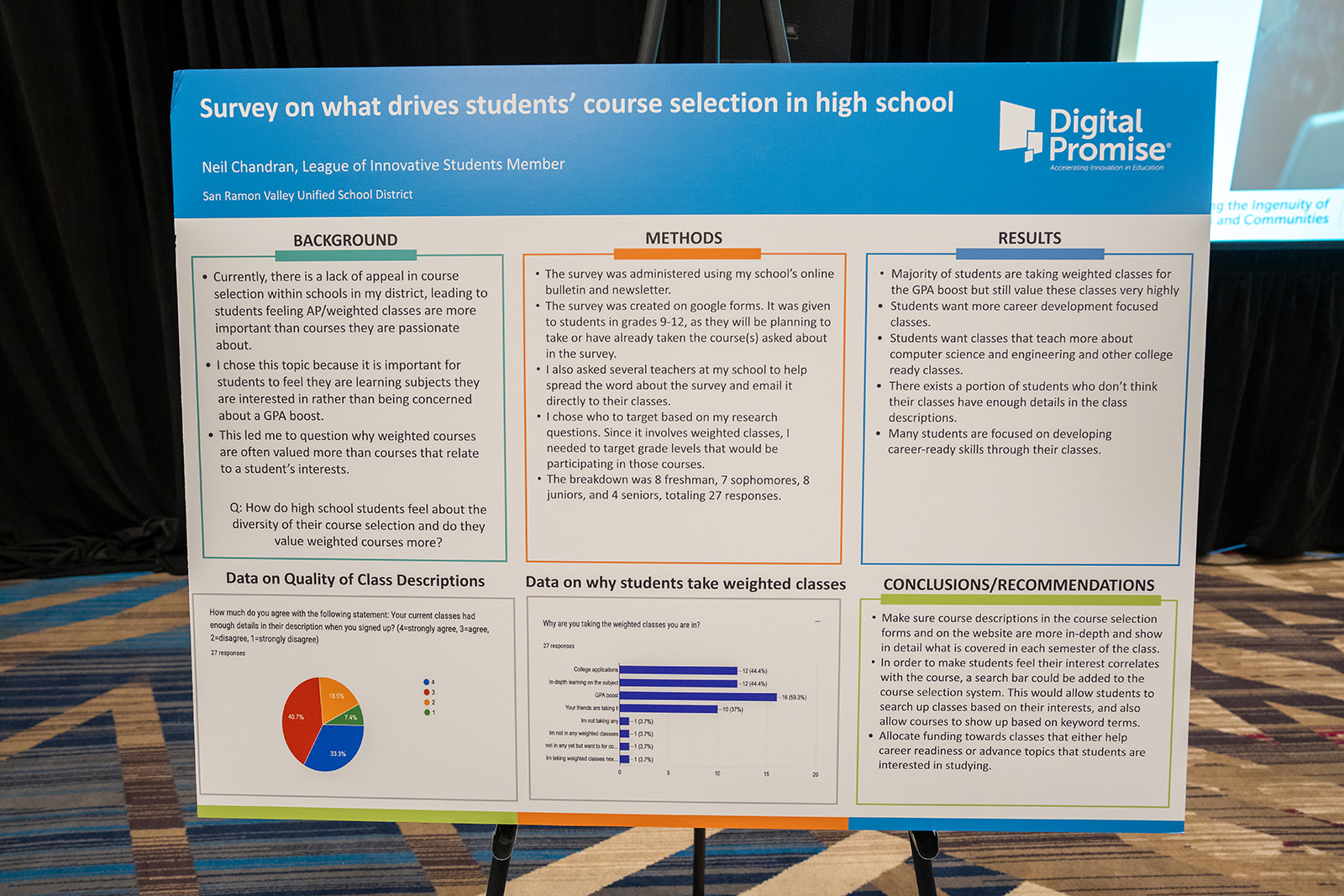
Neil Chandran, a student from San Ramon Valley Unified School District in California, wanted to explore what drives students’ course selection in high school.
“The agenda for R&D in education cannot be a top-down approach. We need to think about how we approach research and evidence-building in the field. Part of the theory of action is that we need to radically blur lines between practice, research and policymaking; we need to bring those much closer together.”
- Roberto Rodriguez, Assistant Secretary, Office of Planning, Evaluation and Policy, U.S. Department of Education
“If we pivot the discussion about why education is essential to the supply chain, all of a sudden we go from a little box over here to a giant box over there. We are never going to get the money we need to improve education if we keep thinking about education as a little box.”
- Dr. Mark Schneider, Director of the Institute of Education Sciences, U.S. Department of Education
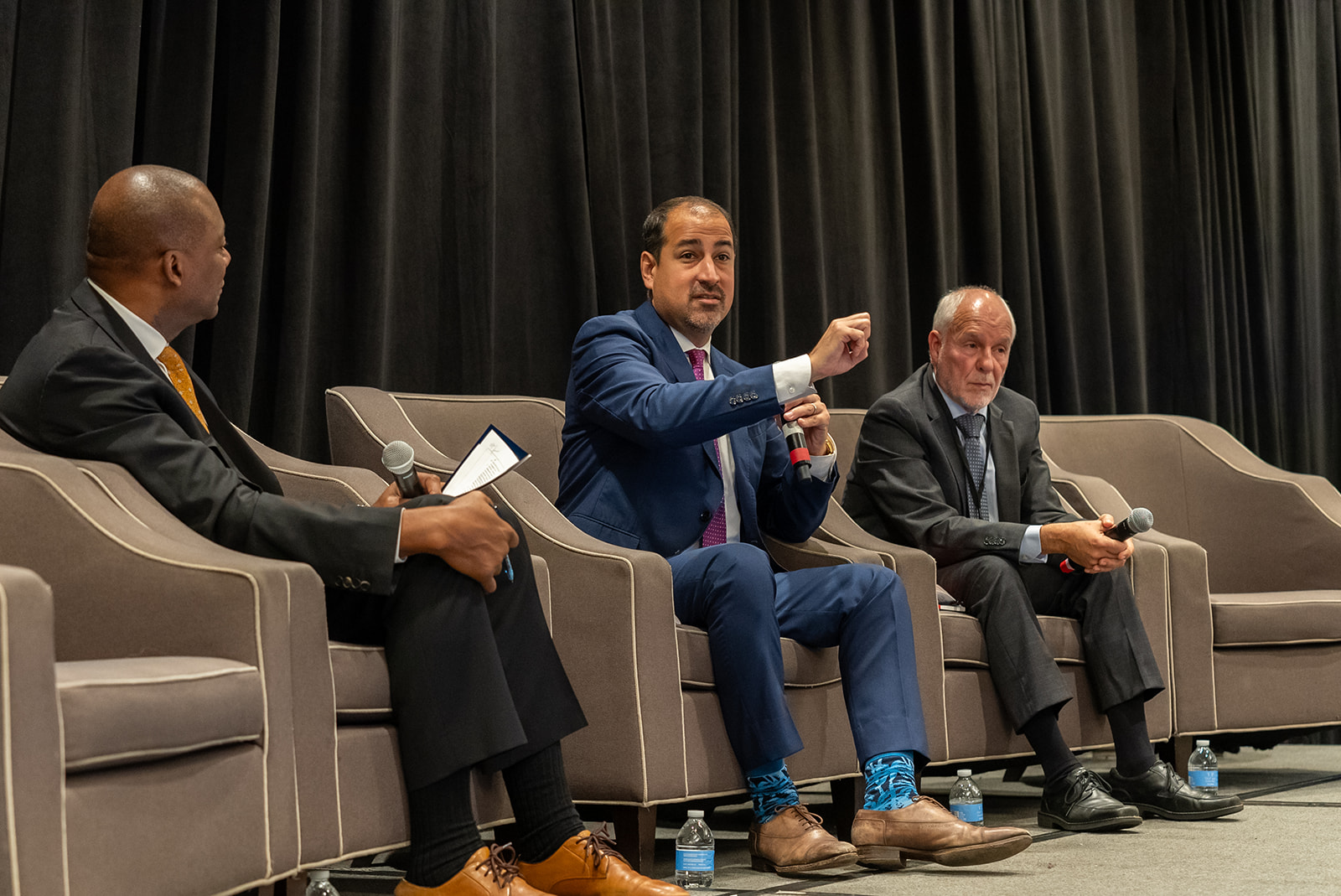
Digital Promise President and CEO Jean-Claude Brizard spoke with Dr. Mark Schneider, director of the Institute of Education Sciences at the U.S. Department of Education, and Roberto Rodriguez, assistant secretary of the Office of Planning, Evaluation and Policy Development at the U.S. Department of Education, about the federal research and development (R&D) policy and investment landscape.
Ensuring students have access to the best learning experiences that are not derailed by pandemics and embody the best technologies requires prioritizing education as a significant national investment. Dr. Schneider underscored the importance of reducing the traditional education R&D timeline by engaging in “rapid-cycle research” that brings educators and students closer to the process and accelerates outcomes. He noted, “We need to get students the skills they need to compete in the job market.” The speakers invited the audience to connect with the Alliance for Learning Innovation, a coalition of organizations leading the effort to inform and advocate for building better R&D infrastructure in education.

A visual depiction of the Tuesday morning sessions, including a conversation with leaders from the U.S. Department of Education, illustrated by Matt Orley.
“What I'm most concerned about with AI is that we make the same mistakes we made with the first wave of edtech. We didn’t spend enough time thinking about the mindset of the teacher. We didn’t spend enough time building the capacity of our educators to rethink learning. We need to create more space for the learner to be an empowered, self-directed agent. If that doesn't happen, AI will only become a cheating tool.”
- Jason Green, Co-Founder and CEO, Learning Innovation Catalyst (LINC)

In our “Beyond the Buzz” session, Dr. Jeremy Roschelle, executive director of learning sciences research at Digital Promise, moderated a conversation about about inclusive, practical AI applications for districts and classrooms with Heather Dowdy, accessibility catalyst and leader, Jason Green, co-CEO and co-founder of LINC Learning, Nicolas Gertler, AI & education advisor for Encode Justice, and Dr. Nneka J. McGee, chief academic officer at San Benito Consolidated Independent School District.
Nneka McGee, chief academic officer with San Benito Consolidated School District, shared the CRISP method that she uses to engage teachers to navigate their own fears with AI and technology: Challenge Conventions, Require Data, Identify Needs, Support Students, Provide Help. And, Heather Dowdy emphasized that “AI should never replace humans, but rather it should amplify human capabilities.”
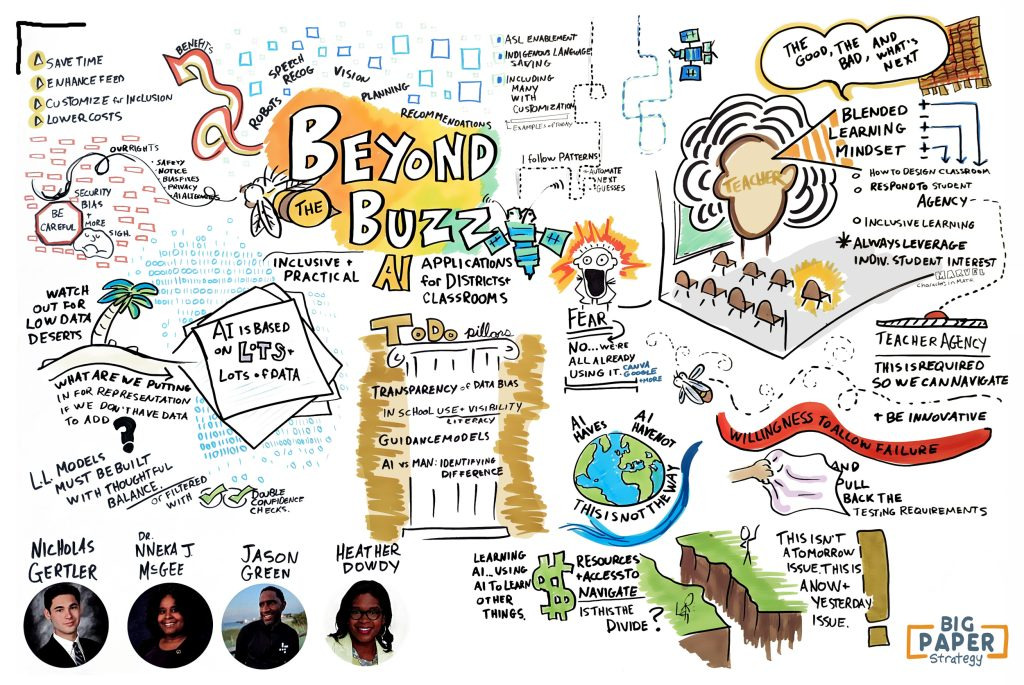
A visual depiction of the Tuesday morning sessions, including a conversation about practical and inclusive uses of AI in schools and classrooms, illustrated by Matt Orley.
“What are we doing to prepare our students to be global citizens, inclusive of all types of students and all types of learners?”
- Dr. Baron Davis, Senior Advisor, Digital Promise
“Education is too content heavy. Content is not as transferable as skills and abilities.”
- Dr. Michael Nagler, Superintendent, Mineola Union Free School District, League of Innovative Schools Advisory Chair
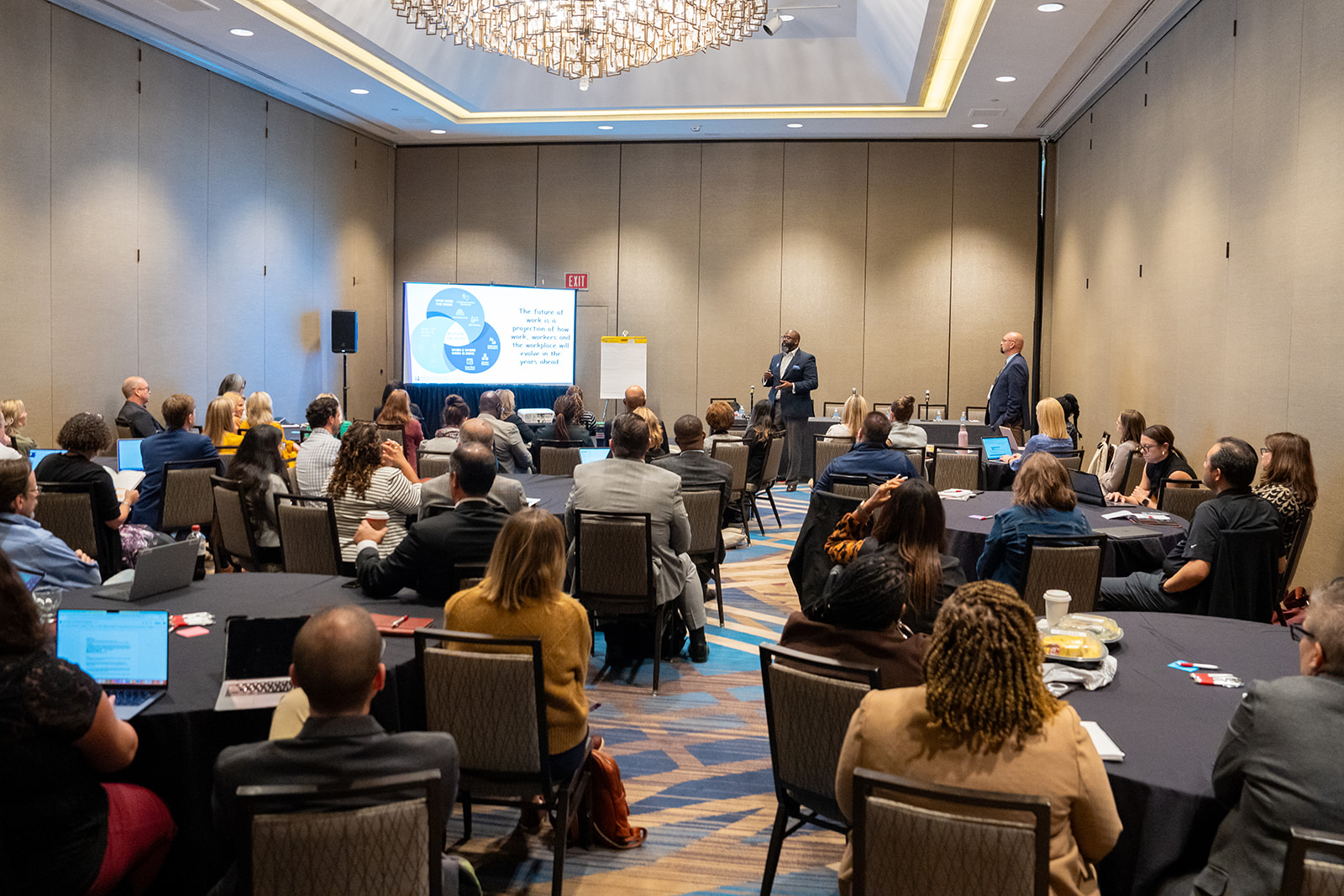
Dr. Baron Davis and Dr. Michael Nagler surfaced examples of how to redesign high school using the World Economic Forum’s framework for Education 4.0—empowering young learners to embrace and develop their uniquely human qualities—those unlikely to ever be replaced by technology.
At Synergy High School, Mineola’s newly designed high school, a curriculum was developed specifically to support students’ skill development with a dashboard to capture how students are working toward developing skills such as critical thinking, creativity and collaboration. By focusing on how knowledge is applied—as opposed to assessment only—the goal is to cultivate students with agency who are self-directed and will develop demonstrable, foundational skills to build their capacity to thrive in the future.
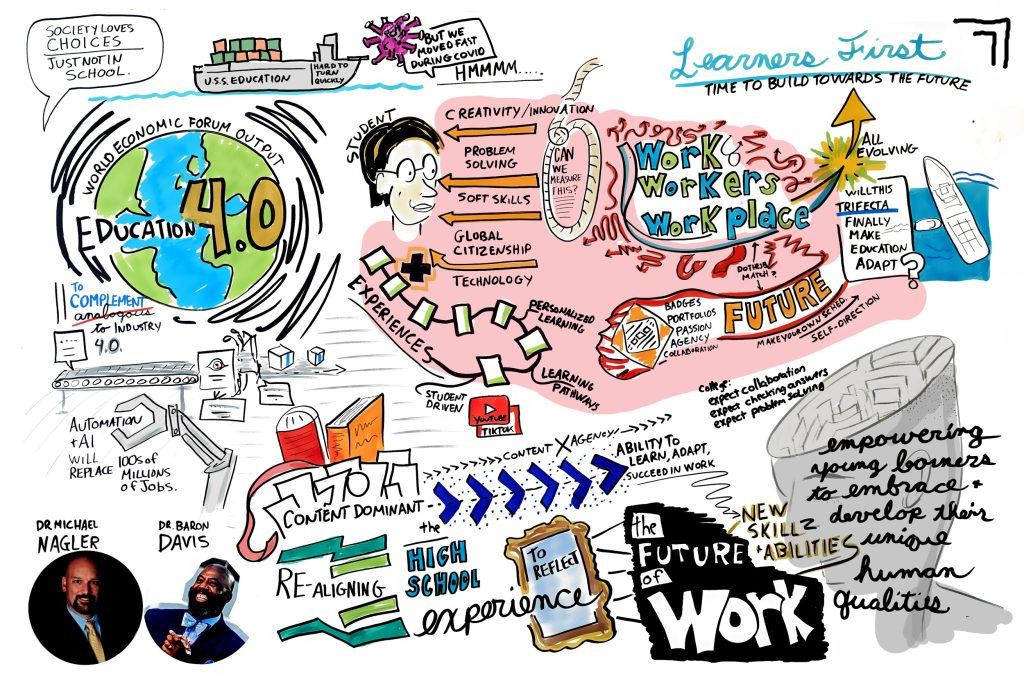
A visual depiction of the “Realigning the High School Experience to Reflect the Future of Work” session, illustrated by Matt Orley.
This was just a sample of what was shared at the convening. In early 2024, coinciding with the release of a new white paper, the Center for Inclusive Innovation will host virtual and in-person conversations and convenings to build on the momentum set in October 2023 to support districts, researchers and developers in advancing R&D with and for students and communities.
Stay connected to the Center for Inclusive Innovation by exploring our work, signing up for the Action Report newsletter, and following me on X (formerly Twitter) @k12kimsmith or LinkedIn for exciting opportunities in the new year.